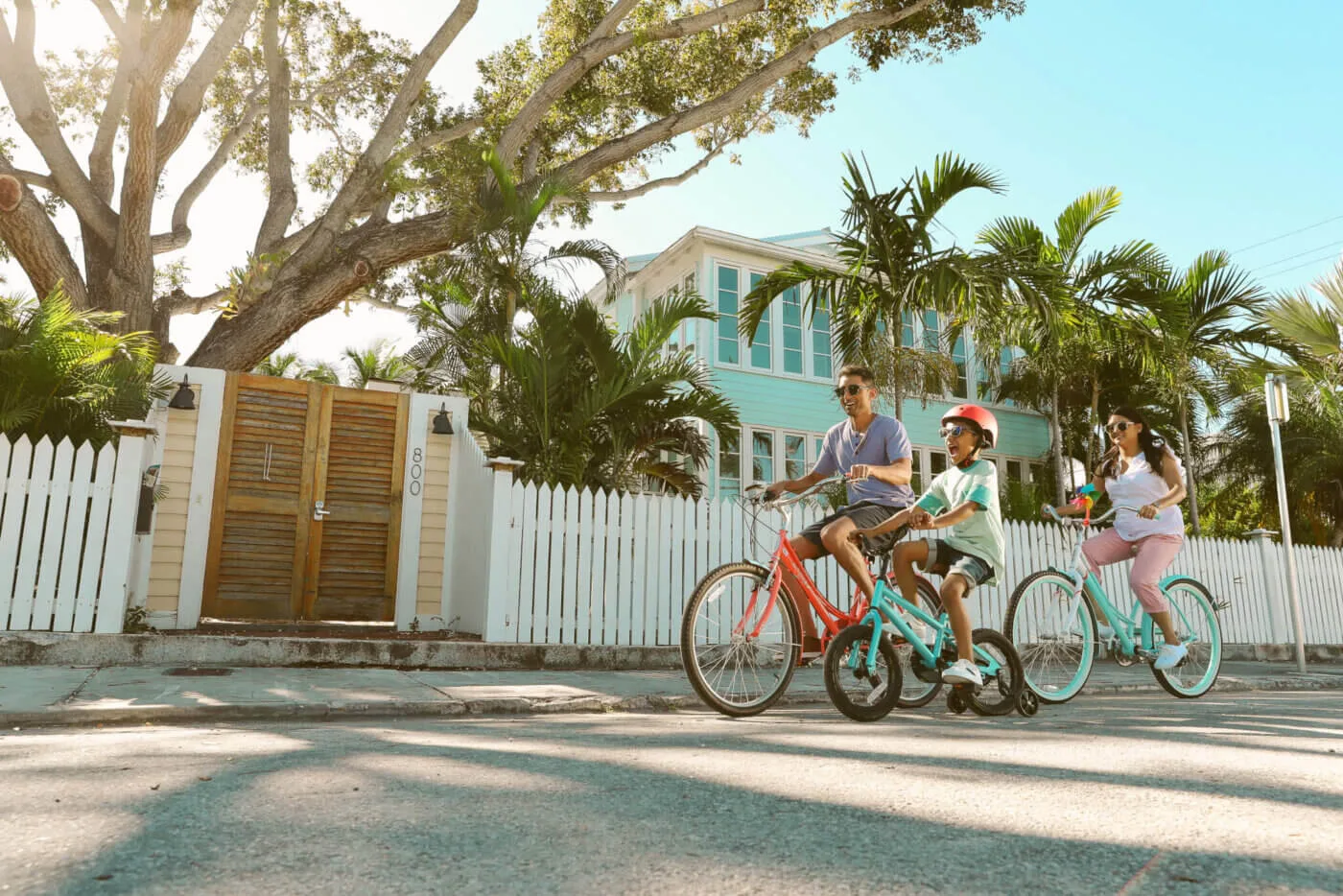
Photo by SPARK courtesy of Visit Florida
Florida may have become the 27th state of the U.S. around 178 years ago, but the history of the Sunshine State—celebrated within many small, historic towns from coast to coast—extends back much further.
According to the National Park Service, it all began 12,000 years ago when the first humans, hunter-gatherers following herds of mammoths, arrived in Florida. By the time European colonial settlers reached Floridian shores in the early 1500s, Florida’s native peoples had established and were maintaining distinctly regional practices and traditions.
In the centuries that followed, Florida experienced a complicated history including regional colonial rule by the Spanish, French, and English, as well as the widespread practice of slavery; in 1860, slaves comprised 44% of the po Florida population.
Yet, throughout the state’s long history, one truth has always remained: Floridians have an unbreakable bond of love and care with their natural environment. In each of these small, historic towns dotting the Sunshine State, visitors will find both historical points of interest and the kind of natural splendor that only exists in Florida.
St. Augustine

Photo by the Rodriguez Group courtesy of Visit Florida
Located on the shell-filled shores of northeastern Florida, the Ancient City holds the title for the U.S.’s oldest continuously occupied settlement. Established in 1565 by Spanish colonial settlers, St. Augustine currently boasts an astounding 36 buildings of colonial origin. Visitors from all over the globe make the trek to St. Augustine’s Historic Downtown district to view the ornate balconies; stained glass windows; and narrow, cobblestoned streets, all of which remain as testament to the craftspeople who built them in the 16th and 17th centuries.
History buffs may opt for a guided tour of the Gonzalez-Alvarez House, the oldest Spanish colonial home in the city, the walls of which were made with coquina shells, a resource plentiful in northeast Florida that, as a building material, provides relief from both hot summer days and cold winter nights.
Key West
The furthest point of the Florida Keys, this island arguably contains the most unique history of any small town in the Sunshine State, starting with its name. When Spanish conquistador Juan Ponce de León landed in this southern tip of Florida in 1521 on his quest for the Fountain of Youth, he called the island Cayo Hueso, or Bone Island, which English-speaking settlers later pronounced as “Key West.” In the years that followed, Key West evolved into a port for global trade routes, a home base for the U.S. Navy and Marines, and a haven and source of inspiration for writers and intellectuals.
Visitors to Key West can step back into time by taking an architectural tour of the Conch Republic’s many historic homes. Make sure to stop by 322 Duval Street; despite being built in 1829 without the use of a single nail, the oldest home in Key West still stands strong, complete with original furnishings and antique family portraits.
Eatonville

Photo by Julie Fletcher courtesy of Visit Florida
Sitting six miles due north of Orlando, the single-square-mile town of Eatonville is the nation’s first Black-incorporated municipality. Settled by 27 formerly enslaved Black men about two decades after the end of the Civil War, Eatonville is also notably the childhood home of author, anthropologist, and playwright Zora Neale Hurston, who penned the 1937 novel Their Eyes Were Watching God and the 1928 essay “How It Feels to Be Colored Me.”
Visit in January to attend the Zora! Fest, a multi-day celebration of Black makers, food, and art. Be sure to take in an exhibit from artists of African ancestry at the Zora Neale Hurston Museum of Fine Arts before you go.
Tarpon Springs

Photo by City of Tarpon Springs courtesy of Visit Florida
It’s a little-known historical fact that, between the 1910s-’40s, Florida’s main export was not citrus but sponges. Once known as the Sponge Capital of the World, Tarpon Springs, about 30 miles northwest of Tampa, served as the bustling center for the natural sponge market, an industry depending on brave divers strapped in helmets made of copper, leather, and brass who retrieved natural sponges from the depths of the Gulf of Mexico. The vast majority of the divers were Greek immigrants, and today, their descendants make sure Tarpon Springs retains its Greek heritage and identity.
Stroll along Dodecanese Boulevard and browse the shops selling jewelry, artisan soaps, and of course, sponges. Then, enjoy a meal of broiled octopus or lamb chops charbroiled Athens-style at Hellas Restaurant and Bakery, perfectly located to allow you to watch one of the last operating sponge boats, the Anastasi, return to harbor full of nature’s loofahs.
Fernadina Beach

Photo by Florida DEP courtesy of Visit Florida
In the nearly five centuries since French settlers arrived on Fernadina Beach, no less than eight different national flags have flown over these 10 square miles of north-central Amelia Island, including those of Scotland and Mexico for brief periods. American history buffs will appreciate a guided tour of Fort Clinch State Park, a nearly 300-year-old military post that served as a Union stronghold during the Civil War and a surveillance center during World War II.
Enjoy a stay (or even just a meal or cocktail) at the Florida House Inn, the 166-year-old hotel where Cuban nationalist poet, philosopher, and journalist José Martí is said to have formulated key actions contributing to the independence of Cuba from Spain.
Cedar Key

Photo courtesy of Visit Florida
Located about 60 miles southwest of Gainesville on Florida’s Gulf Coast, Cedar Key is a laid-back, seaside town perfect for anglers, seafood connoisseurs, and historians alike. Opportunities for reeling in catches of tarpon, snook, and redfish are bountiful among the canals and grass flats surrounding Cedar Key, especially if you charter a fishing boat and gain insiders’ tips from a local company like Tides Turn. Locals flock to never-too-crowded restaurants like Steamers Clam Bar & Grill and Tony’s Seafood Restaurant, where delicious dishes like shrimp or oyster po’ boys are paired with live local music. Just a 15-minute drive from Tony’s lies a monument to Cedar Key’s centuries-old history: Shell Mound. Located within the Lower Suwannee National Wildlife Refuge, this archaeological site dating back to the year 400 was the seat of civic and ceremonial gatherings for the Indigenous peoples—likely the Timucuan, Apalachee, and Creek tribes—who called this area home. Marvel at the 20-foot-tall mound made primarily of oyster shells that surrounds a plaza where University of Florida researchers recently discovered evidence of ancient feasts celebrating the summer solstice.
READ MORE: 4 Family-Friendly Florida Vacation Spots to Visit on a Budget
Politics

Is Bad Bunny’s new song ‘Adivino’ about his short-lived romance with Kendall Jenner?
The singer's new song is undoubtedly about heartbreak, however it has some key phrases that could possibly refer to the brief romance between Bad...



The best food Marlins fans can munch on at loanDepot Park
Miami Marlins fans looking for a bite to eat during home games this season will have plenty of tasty options to choose from. The food lineup at...
Local News



Is Bad Bunny’s new song ‘Adivino’ about his short-lived romance with Kendall Jenner?
The singer's new song is undoubtedly about heartbreak, however it has some key phrases that could possibly refer to the brief romance between Bad...



The best food Marlins fans can munch on at loanDepot Park
Miami Marlins fans looking for a bite to eat during home games this season will have plenty of tasty options to choose from. The food lineup at...




